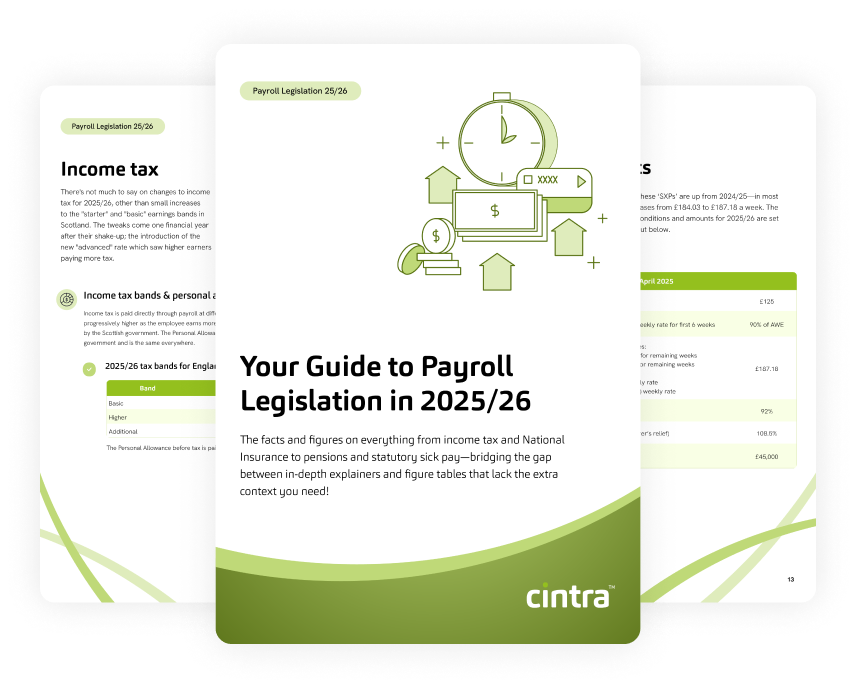A payroll compliance audit is the process of scrutinising your payroll processes and numbers to check everything is correct, accurate and in keeping with compliance.
Why is it important? First up, compliance! Staying compliant with legal and tax requirements is vital. Secondly, you’ll want to make sure all the records you hold are 100% accurate. If not, oversights could creep in, which can be costly to both you and your people (in time, money and morale).
Auditing gives you an excellent chance to see where you’re at and what can be improved. It also helps to prevent or catch fraud and give everything a good, old-fashioned tidy up.
The need for payroll compliance audits
Certain laws are in place to protect both your organisation and your people, and you must make sure you adhere to them.
Payroll compliance comes in all shapes and sizes, starting with simple requirements such as paying your people the National Minimum Wage (there’s a calculator for that here). Then moving up to more complicated matters like pensions. Under the Pensions Act 2008, you must make sure you offer a workplace pension to your people and adhere to automatic enrolment rules. You’ll also have to stick to the laws around mandatory deductions, as per the Employment Rights Act 1996.
There’s a lot to consider, but the beauty of a payroll compliance audit is that you’ll spot any slippage.
What makes up a payroll compliance audit?
There are several aspects of your payroll that will be examined via a payroll compliance audit:
Employee classification
Have you correctly classified your team member as an employee or a contractor? And are they…
- Full-time
- Part time
- Seasonal / temporary
- Intern
- Agency employee
- Volunteer …?
Pay rates and overtime calculations
An audit will carefully review what your people are paid, what your overtime structure is and how you calculate it. Spot any anomalies before they become problematic.
Deductions and allowances
You’ll determine if you’re making the correct deductions and allowances.
Statutory payments
Are you making the correct statutory payments as you should? For example, sick pay and maternity pay.
Record keeping
An audit will examine all of your payroll record keeping with a fine-toothed comb. You should be keeping the following records as standard:
- How much you pay your people
- The deductions you made
- Employee leave
- Sickness absence
- Tax code notices
- Taxable expense or benefits
- Payroll Giving Scheme
These records must demonstrate that you’ve reported accurately. It’s on you to keep them for 3 years from the end of the tax year they relate to.
Pensions
Is your organisation following auto-enrolment obligations? You must arrange for every team member to be automatically enrolled into a pension scheme if they are eligible.
The payroll compliance audit process
So, how do you actually carry out this audit?
Prepare to plan
It all starts with preparation and planning. Make sure you gather all of the documentation you’re going to need before you begin. It’ll help you to prepare a document outlining the audit procedures. Ask yourself what data and documents you’re going to need.
Records
Let’s get methodical! Keep a log of your records, to include:
- Their format
- Their location
- How you’ll retrieve them
Get in touch with your IT department to make sure the data you need is retrieved properly and securely.
Set the scope
How deep do you want to go? How many documents will be involved in your audit? Will it be a simple affair, or do you want to go thorough? Make sure to always guard your people’s confidentiality by keeping to the scope of the audit.
Set your timeframe
Define how long you wish to spend carrying out the payroll compliance audit. Days, months?
Action the audit
Once you’re all set with your preparation, it’s time to begin!
You’ll want to focus on a few specific areas when carrying out the audit, and you can make use of some handy tools to keep things running as smoothly as possible.
Seek help
There are some helpful ways to carry out an audit. One obvious thing you can do is to seek help from outside the company, like hiring an external team to hold your hand through the process. They can also help you use your findings efficiently.
Then there’s technology. Making use of a smart payroll software is invaluable when it comes to auditing and it’s a relatively easy thing to implement. With the right software, you’ll be able to keep an eye on your own payroll records, and your people will be able to too! The right software will have all the bells and whistles to help keep you compliant.
Examine employees
Review all the people on your payroll and check that they worked for you during the time period that is stated. Also check that the list of current team members aligns with your employment records.
Crunch those numbers
Payroll people love to analyse the numbers. We’re talking about hours worked, rate of pay, total pay for the period and tax deductions.
- Have you been paying your team members the right amounts?
- Is the pay rate up to date?
- Does everything match on the employee’s record?
- Have they had a raise or reduction (and is that reflected in the records?)
- Did they work the actual number of hours during their pay period?
- Where you’ve tracked time and attendance in your payroll software, does your system corroborate this?
Time is of the essence
Make sure you’re classifying time off in the correct category. Whether it’s holiday entitlement, sick leave, maternity leave, or whatever else – make sure it’s correctly labelled. This will allow you to see when your people worked and when they didn’t, for whatever reasons.
Reconcile
Here you’ll play the comparison game. Take what you find and compare this with your records to check that it all matches up. Is there an anomaly? Don’t fret if there is. Scrutinise every detail to solve the problem.
Do your records and your organisation’s ledger reconcile? They should be a perfect match to what you find in your auditing process.
Do your payroll records match with your organisation’s bank statements? Have a looksee at what’s been withdrawn from your account and the figures that you find in your payroll records.
Tax matters
Are you accurately taxing your team? You need to have a look to see if you’re deducting the correct amount of tax and NI from your team’s wages. Check that your tax submissions to HMRC are correct and if the figures on your reports match up with your payroll records. The tax deductions and wages in your audit findings should align nicely with the records you hold.
The aftermath…
After you’re done auditing your payroll, you should compile a detailed report. This document will contain all your findings, and it’ll provide you key information as it relates to your payroll procedures. Flag up any problems and make the necessary corrections. It’ll give you the chance to identify where you can up your compliance game and where and how you can implement any recommendations.
So that’s the audit done. What about some common problems you might encounter in your payroll?
Misclassification of employees
Employee or contractor? Categorising your team members wrongly will make you a) non-compliant and b) mean your people won’t be getting the benefits they’re entitled to (like minimum wage, paid leave, and so on).
Incorrectly calculated overtime
Underpaying or overpaying your team members for their overtime can cause considerable stress for both you and your team members. They’ll either be short of money, or have the stress of paying it back later down the line. It’s a frustrating mistake that impacts everybody and correcting it can be a time-sucking exercise.
Failing to keep updated records
Failing to keep your records updated can cause all sorts of hardships, with the most obvious one being lack of compliance. If you flout the GDPR rules for example, you’ll be facing harsh fines and even prosecution. If you fail to keep former employee records for the right amount of time, you’ll be looking at penalties for non-compliance with the statutory retention period.
Not regularly updating payroll software or systems
If you fail to regularly update and review your payroll software and systems, you run the risk of mistakes, inaccuracies, non-compliance and potential security issues.
Overlooking changes in legislation
Last, but not least: keep up to date with legislative changes! If you don’t know what’s happening, get to know. Because you’ll likely be guilty of non-compliance if you don’t keep up.
Payroll compliance audits don’t have to be bothersome
Especially if you partner with a reliable payroll software provider. You can stay compliant (with minimal effort on your part!) with Cintra’s payroll services.
We offer in-house and outsourced payroll services, with statutory rates are included in the software as standard. We’ll keep you GDPR compliant, and we have both RTI and auto-enrolment functionality is built into our robust suite of software. Give us a shout today and we’ll show you how surprisingly stress-free a payroll compliance audit can be.

Payroll Legislation Guide
The facts, figures, thresholds and allowances for 2025/26 spanning tax, National Insurance, pensions, statutory payments and more.
Download now


